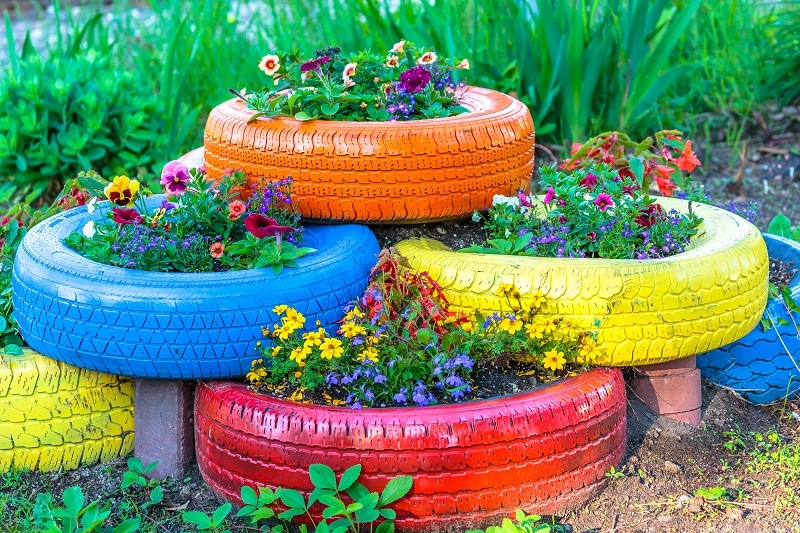Step-by-Step Orchid Care Instructions
Posted on 23/08/2025
Step-by-Step Orchid Care Instructions: A Comprehensive Guide
Orchids are renowned for their vibrant blooms and striking beauty. Once considered exotic and difficult, these plants can thrive indoors with the right knowledge and care. Whether you're a novice or a seasoned grower, following step-by-step orchid care instructions can help your plants flourish year-round. In this detailed guide, you'll discover everything you need to know about nurturing healthy orchids.

Understanding Orchid Basics
Before delving into step-by-step orchid care, it's important to recognize that orchids are a diverse family of flowering plants. There are over 25,000 species, but the most popular types for indoor growers include:
- Phalaenopsis (Moth Orchid): Easy to care for and commonly found in homes and offices.
- Cattleya: Known for large, fragrant blooms.
- Dendrobium: Features tall canes and frequent blossoms.
- Oncidium: Characterized by smaller, abundant flowers.
Different varieties may have specific needs, but the foundational principles of proper orchid care apply to most types.
Step 1: Selecting the Right Orchid
Choosing the correct orchid variety is crucial. For beginners, Phalaenopsis orchids are highly recommended because they:
- Are resilient and adaptable to indoor environments
- Offer long-lasting blooms (up to several months)
- Require less stringent maintenance compared to other species
Always select healthy plants with strong, green leaves, and avoid orchids with yellowing foliage or mushy roots. This ensures a thriving start for your orchid care journey.
Step 2: Understanding Orchid Light Requirements
Proper lighting is one of the most vital elements of growing beautiful orchids. Orchids generally prefer bright, indirect light. Direct sunlight can scorch their delicate leaves, while too little light inhibits blooming. Here's how you can provide optimal light:
- East or West-facing Windows: These locations offer gentle morning or late afternoon sun, ideal for most orchids.
- Sheer Curtains: Use a thin curtain to filter harsh sunlight and protect your orchids from burning.
- Artificial Lights: During winter or in low-light homes, fluorescent grow lights can supplement natural light. Position lights about 6-12 inches above the foliage.
If leaves appear dark green, the orchid may need more light; if they're yellowish, reduce sunlight. Find a balance for healthy, strong growth.
How Can You Tell If Your Orchid Gets Enough Light?
- Leaf color: Medium green with a slightly yellow tint is ideal.
- Blooming frequency: Orchids not blooming or producing new growth may be light deficient.
Step 3: Watering Orchids Correctly
Watering is often the trickiest aspect of orchid care instructions. Too much water can cause root rot, while too little leads to dehydration. Here is a step-by-step process for watering your orchids effectively:
- Check the potting media: Only water once the top 1-2 inches of the potting mix dries out - about every 7-10 days for most orchids.
- Water early in the day: This allows leaves and crown to dry before nighttime, preventing rot.
- Use tepid water: Cold water can shock roots; room temperature is best.
- Water thoroughly: Let water run through the pot for even moisture and to flush out salts.
- Never let orchids sit in standing water: Ensure the pot has good drainage and empty catch trays after watering.
Tip: Use the 'weight test' - lift your orchid; if the pot feels light, it's time to water.
Step 4: Orchid Humidity and Air Circulation
Orchids originate from humid, tropical environments. Maintaining adequate humidity can help your plant thrive. Aim for 40-60% humidity for optimal orchid health.
Simple Methods to Boost Humidity:
- Humidity Trays: Place your orchid pot on a tray filled with pebbles and water. The evaporation increases humidity without soaking roots.
- Group Plants: Placing orchids close together naturally raises humidity levels.
- Room Humidifier: Using a humidifier is effective, especially during dry winters.
Good airflow is also important to prevent fungal and bacterial diseases. Use an oscillating fan set on low, ensuring air circulates without blowing directly on the plants.
Step 5: Fertilizing Orchids for Optimal Growth
Like all plants, orchids need nutrients to grow and bloom. Commonly, a specialized orchid fertilizer (20-20-20 or similar ratios) is ideal for indoor orchids. Here's how to fertilize:
- Use a balanced, water-soluble orchid fertilizer every 2 weeks during growing season (spring and summer).
- Reduce feeding to once per month during fall and winter.
- Always water your orchid before fertilizing to prevent root burn.
- Dilute fertilizer to half the recommended strength for safe feeding.
- Flush the pot with fresh water once a month to remove salt buildup.
Do not fertilize newly repotted or stressed orchids until you see active new growth.
Step 6: Repotting Orchids
Repotting is essential for long-term orchid health. Over time, potting media breaks down, reducing aeration and increasing disease risk. Repot every 1-2 years, or when:
- The potting mix starts to break down and retain too much moisture
- The orchid has outgrown its container
- Roots are circling tightly or growing out of the pot
- You detect fungus or pests in the media
How to Repot an Orchid (Step-by-Step):
- Remove the orchid: Gently ease the plant from its pot and shake off old media.
- Trim dead roots: Prune away brown, mushy, or damaged roots with sterilized scissors.
- Prepare a new pot: Use a slightly larger container with drainage holes.
- Add fresh media: Use a coarse, well-draining mix of bark, sphagnum moss, or perlite.
- Position the plant: Set the orchid in its new pot and gently tuck media around the roots.
- Water lightly: Moisten the potting mix but avoid soaking.
Repotting gives your orchid a fresh start, encouraging robust root and leaf growth.
Step 7: Encouraging Orchid Blooming
Getting your orchid to bloom again is often the most rewarding part of orchid care. Follow these tips to encourage repeat flowering:
- Provide a night-time temperature drop: Orchids need a 10-15?F temperature difference between day and night for flower spikes to form.
- Increase daylight hours: Ensure your plant gets at least 12-14 hours of light during bloom season (supplement with artificial lights if needed).
- Avoid moving your plant too often: Orchids dislike drastic environmental changes.
With proper orchid maintenance and patience, you'll enjoy blooms that last several weeks to months!
Step 8: Common Orchid Pests and Diseases
Successfully caring for orchids includes knowing how to spot and tackle pests or diseases. Common issues and their solutions include:
- Aphids and Scale: Remove by wiping leaves with a diluted soap solution or horticultural oil.
- Mealybugs: Dab with rubbing alcohol using a cotton swab.
- Root Rot: Prevent with proper watering and fast-draining media; trim rotted roots and repot.
- Leaf Spot and Fungus: Improve air circulation and avoid overhead watering.
Inspect your orchids weekly for signs of problems and act promptly to avoid major damage.
Extra Tips for Thriving Orchids
- Clean leaves and pots: Dust can block light. Wipe leaves gently with a damp cloth.
- Label your orchids: Tracking flowering times and conditions helps improve future care.
- Be patient: Orchids can take months to reward you with showy flowers, but consistent care pays off.
- Join orchid communities: Both local societies and online forums offer valuable advice and support.
Step-by-Step Orchid Care Instructions: Your Path to Success
Growing beautiful orchids isn't as daunting as it may seem. By following these thorough, step-by-step orchid care instructions, you will provide the best possible environment for your plants to thrive:
- Select healthy orchids suited to your skill level.
- Provide bright, indirect light while avoiding extremes.
- Water thoughtfully, letting the potting mix partly dry between waterings.
- Maintain proper humidity and airflow.
- Fertilize regularly, but sparingly.
- Repot every 1-2 years to refresh the growth medium.
- Encourage natural cycles for the best chance at blooming.
- Monitor for pests and diseases, addressing issues early.
With consistent care and attention, your orchids will become long-lasting, rewarding additions to your indoor garden. Explore the fascinating world of orchids and watch as your efforts blossom into a dazzling array of colors and forms!

Frequently Asked Questions: Orchid Care Simplified
How often should I water my orchid?
Most orchids need watering every 7-10 days. However, always check the potting medium: only water once the top inches feel dry.
Why aren't my orchids blooming?
Lack of light or insufficient temperature differences between day and night are common causes. Ensure proper light exposure and, if needed, place the orchid in a cooler room overnight to stimulate flower spikes.
How do I know when to repot my orchid?
When roots grow out of the pot, potting mix breaks down, or you see root rot or pests, it's time to repot.
Do orchids need direct sunlight?
No, orchids prefer bright, indirect light. Direct sunlight can burn their leaves.
Conclusion: Master the Art of Orchid Care
In conclusion, tending to orchids is a fulfilling hobby that rewards patience and diligence. By adopting thorough step-by-step orchid care techniques, you pave the way for lush foliage and dazzling blooms in your home. From proper watering and light adjustment to fertilizing, humidity management, and pest control, each component is vital for orchid success.
Ready to experience the beauty and elegance that orchids bring? Start your journey today by applying these easy, effective orchid care instructions and watch your indoor paradise grow!
Latest Posts
Behind the Scenes: Our [AREA] Florist Team in Action
3 Easy Steps to Ensure Your Flowers Maintain Their Beauty
Enhancing Your Garden with Robust Hydrangea Care Strategies






